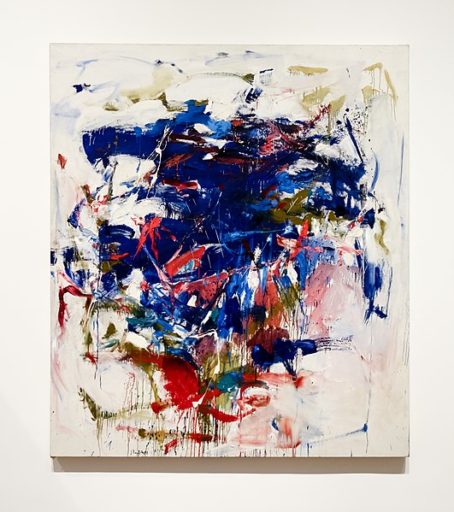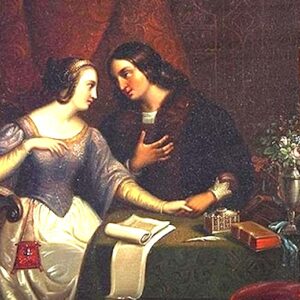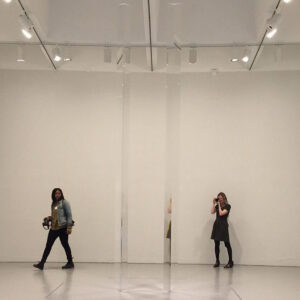You’ll have noticed in the course of your life that sometimes a name keeps popping up. Often, you fail to acknowledge this fact the first couple of times it happens. The name doesn’t register. Then, sooner or later, it does. This happened to me most recently with the name Hugo von Hofmannsthal.
Hugo Laurenz August Hofmann von Hofmannsthal, to be more precise. He was born in Vienna in 1874 and died in Austria in 1929. This was a medium-length life lived during a strange era when the Central European world went from being a 19th century sort of place to being a post-WWI sort. A disjointed time, but, then again, what times aren’t disjointed? Von Hofmannsthal was a poetic person; he was given to writing poetry and also short stories, novels, and then, more famously, librettos for composers like Richard Strauss and Sibelius. You could lump Hugo von Hofmannsthal with the late Romantics, who are themselves cousins to the Decadents. But these are only labels and categories.
Sometimes I think that the late Romantics are the most Romantic of all, since to be a Romantic is to commit to a lost cause. And it was already a lost cause to be an early Romantic of the 18th/early 19th century. But to be a Romantic in the late 19th/early 20th century was to be double doomed. It was to begin in anachronism and end in total dissolution.
I’ve known of the existence of Hugo von Hofmannsthal for some decades. I believe that I’ve read a short story or two over the years and definitely heard some of his libretti in the operas of Richard Strauss. But the name never truly registered for me until recently when I was reading about the American abstract painter Joan Mitchell. I’ve become obsessed with Joan Mitchell, actually. Looking at her paintings. Reading her biographies. Looking at more of her paintings. Reading what has been written about her. Looking at her paintings. Reading her letters. Looking at her paintings. In Joan Mitchell we discover a middle-late Romantic of the mid-20th century, a very special case in the long and secret history of Romanticism, a history that cannot and shall not be told.
It is no great surprise, I suppose, that Joan Mitchell eventually hit upon Hugo von Hofmannsthal, and that the Hugo von Hofmannsthal writing she hit upon in particular was The Lord Chandos Letter. Hugo von Hofmannsthal published The Lord Chandos Letter in 1902. It purports, however, to have been written in 1603, and to have been composed by a person named Lord Chandos and then sent to Francis Bacon. The letter, then, is a kind of literary ruse of which Romantic writers have always been fond. E. T. A. Hoffmann was, for instance, especially enamored of these sorts of tricks, having once even penned a book that was supposed to have been written by a cat. Indeed, there is a literary legacy linking Hoffmann and Hofmannsthal by more than just the odd similarity of name. Hoffmann, you see, saw his writings as tied to the music of Robert Schumann in much the same way that Hofmannsthal’s writing was bound up with Richard Strauss.
Music. It is probably the favored medium of all Romantics, who officially favor no medium. Joan Mitchell could never seem to paint without music of some kind blaring from her studio. She would blast Mozart and Bach but also frequently Billie Holiday and, during a time of particular heartache, Henry Purcell’s 17th century opera Dido and Aeneas. Romantics, it should be said, are interested in the blurry boundaries between all media, and beyond that, to the blurry boundaries between any one thing and any other thing. They are interested in the fact that the principle of individuation is deeply mysterious and, in some way hard to articulate, false. Not completely false. There are individuals. But every time you try to establish what makes one thing the one thing that it is, it falls apart. The greatest Romantic works are always produced at the cusp of this threshold, the threshold between something being what it is and not being what it is.
This is a hard line to hold, a thin line to tread, which explains, in part, why Romantics tend toward the taciturn and melancholy. Joan Mitchell, for instance, in fine Romantic fashion, spent several decades slowly destroying herself with drink and pills and eruptions of violence toward the people she loved and her own canvases. During those years of torment and the production of some of the greatest paintings ever made, she read The Lord Chandos Letter. She understood it immediately and completely.
The art critic Kenneth Clark once wrote a book called The Romantic Rebellion: Romantic Versus Classic Art. It is a so-so book with a few deep insights. But I remember that Clark says somewhere in that book—I can’t be bothered to find the exact quote—something like the following: he says the Romantic would get rid of the medium altogether if she could. That’s to say, the true Romantic is always at least partially disgusted by what happens when the ephemera of an idea, feeling, notion, mood, whatever we want to call it, is concretized in paint, words, notes, marble. The final result is always both too much and not quite enough.
What does Hugo von Hofmannsthal reveal in The Lord Chandos Letter? Hofmannsthal/Chandos writes, “Everything seems to mean something, everything that exists, everything that I can remember, everything in the most muddled of my thoughts. Even my own heaviness, the usual dullness of my brain, seems to mean something: I feel a blissful and utterly eternal interplay in me and around me, and amid the to-and-fro there is nothing into which I cannot merge.” This feeling is so overwhelming that Lord Chandos feels there is no point in writing anymore, no point, maybe, in doing anything at all.
Even my own heaviness… it is those four words that hit me, somehow, hardest of all. The secret of being something and being nothing at all, at the very same time, the secret of this, the greatest of all secrets, is contained in those four words and in three passages in the writings of E. T. A. Hoffmann and in five, maybe six paintings by Joan Mitchell.
I leave you with this series of threads leading in several directions at once. I assure you that they all connect. The problem is that they connect in a place where words become less than useless. They connect in a place without place and in a thought that cannot be thought. Tacked above the corridor that leads down toward a closed doorway within the most hidden inner sanctum of Romanticism are the words of The Lord Chandos Letter.
Morgan Meis has a PhD in Philosophy and is a founding member of Flux Factory, an arts collective in New York. He has written for n+1, The Believer, Harper’s Magazine, The Virginia Quarterly Review and is a contributor at The New Yorker. He won the Whiting Award for non-fiction in 2013. Morgan is also an editor at 3 Quarks Daily, and a winner of a Creative Capital | Warhol Foundation Arts Writers grant. A book of Morgan’s selected essays can be found here. His new book from Slant is The Drunken Silenus. He can be reached at morganmeis@gmail.com.
image: Joan Mitchell, Rock Bottom, 1960-1961, courtesy of Wikimedia Commons





